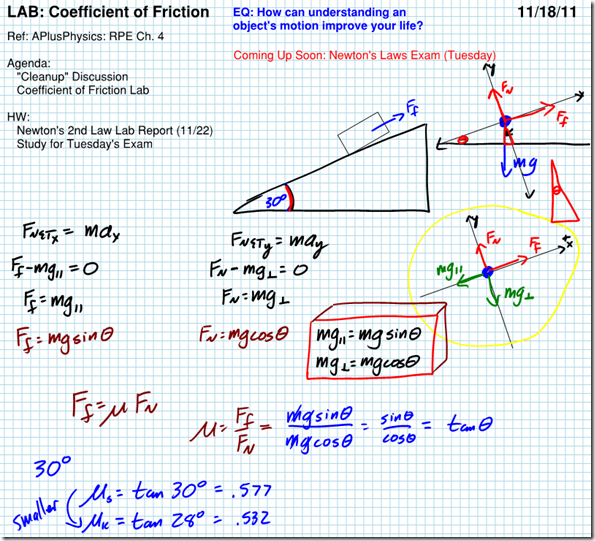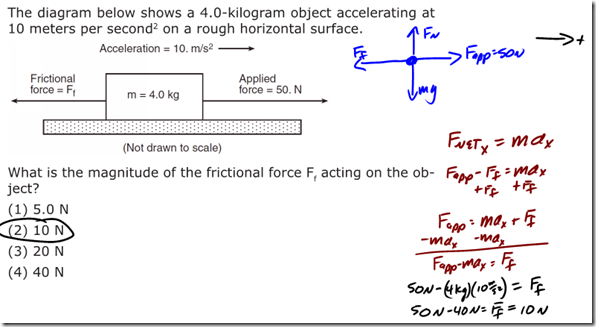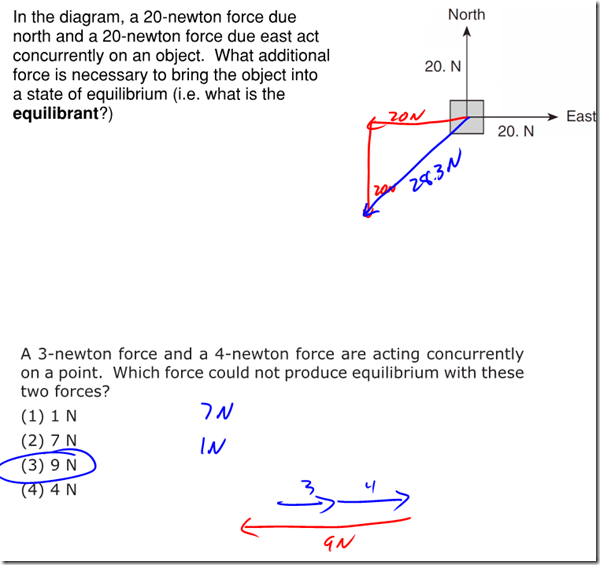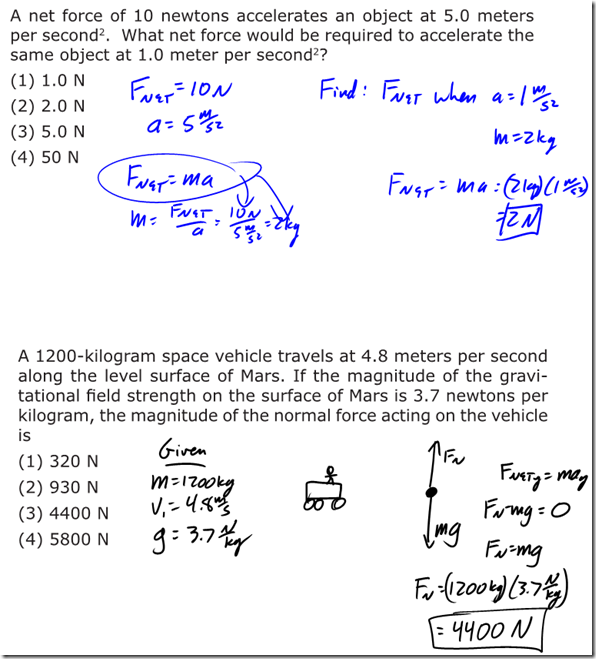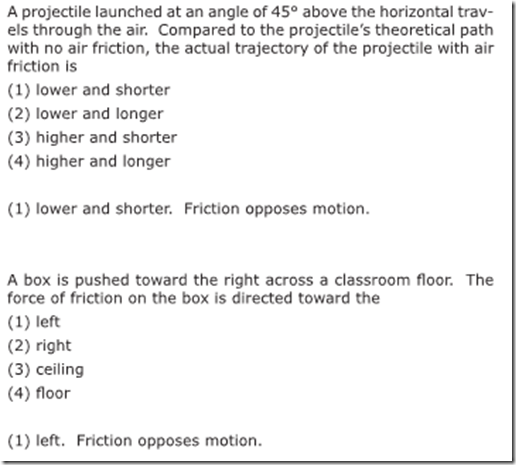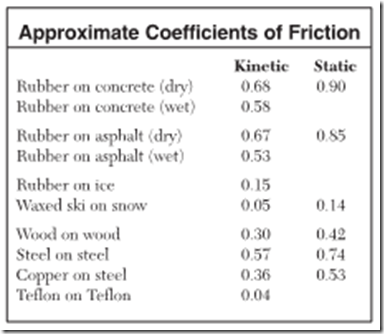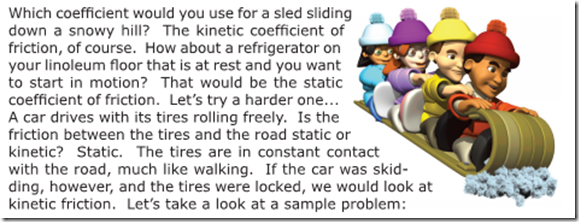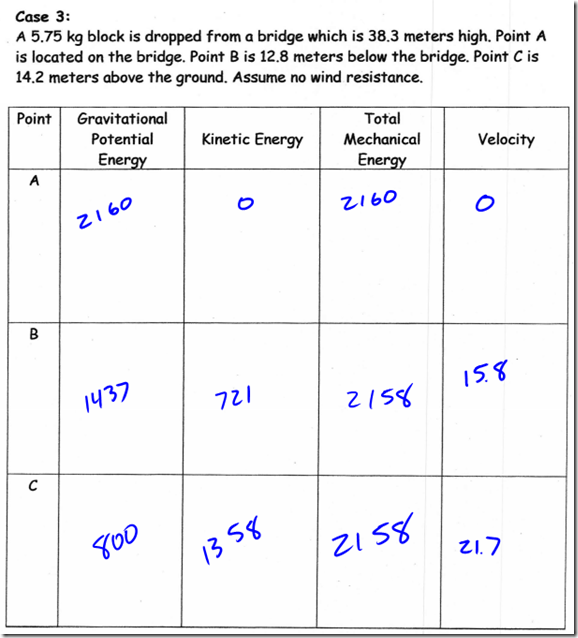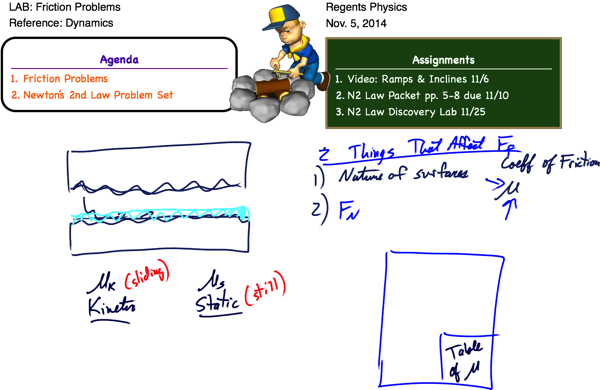
Tag Archives: friction
Introduction to Friction
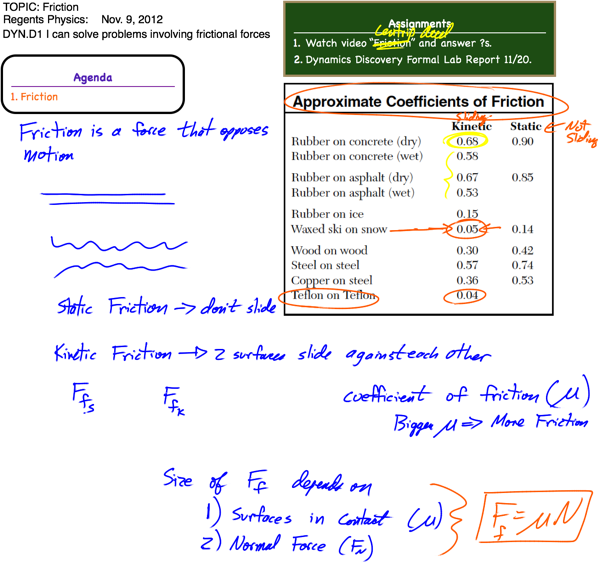


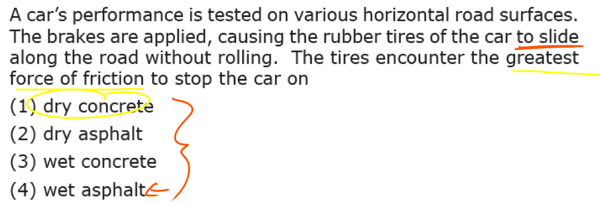
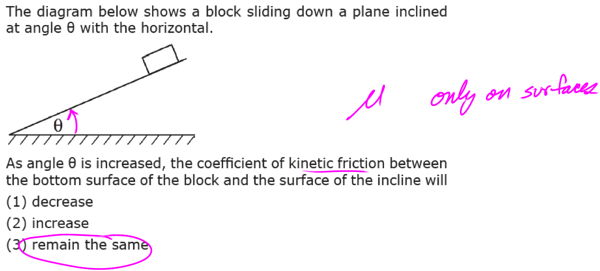

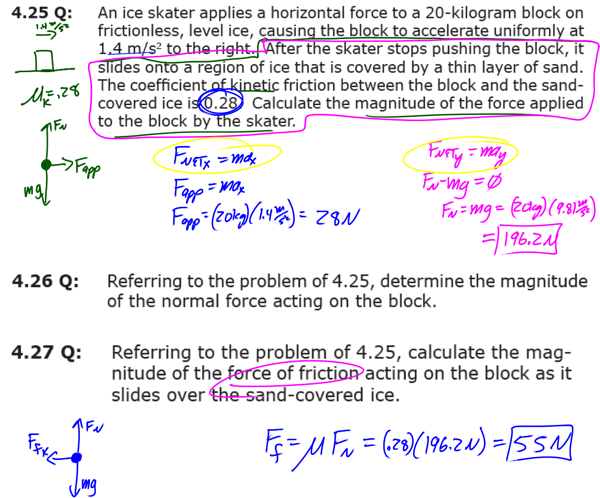
Ramps & Friction WS
LAB: Coefficient of Friction
Dynamics Review/Cleanup Day
Intro to Friction
Up until this point, we’ve been ignoring one of the most useful and most
troublesome forces we deal with every day… a force that has tremendous
application in transportation, machinery, and all parts of mechanics, yet we
spend tremendous amounts of money each day fighting it. This force, friction,
is a force that opposes motion.
There are two main types of friction. Kinetic friction is a frictional force
that opposes motion for an object which is sliding along another surface.
Static friction, on the other hand, acts on an object that isn’t sliding. If
you push on your textbook, but not so hard that it slides along your desk,
static friction is opposing your applied force on the book, leaving the book
in static equilibrium.
The magnitude of the frictional force depends upon two factors:
- The nature of the surfaces in contact.
- The normal force acting on the object (FN).
The ratio of the frictional force and the normal force provides us with the
coefficient of friction (µ), a proportionality constant that is specific to the
two materials in contact.
You can look up the coefficient of friction for various surfaces on the front
page of your Regents Physics Reference Table. Make sure you choose the
appropriate coefficient. Use the static coefficient (µs) for objects which are
not sliding, and the kinetic coefficient (µk) for objects which are sliding.


